Pu Luong, which has recently developed into a mini-Bali, is currently the best spot to witness rice terraces close to Hanoi. You will pass through Mai Chau, a picturesque mountainous region, on your trip from Hanoi to Pu Luong. After the stress of daily life, Mai Chau – Pu Luong is one of the few places with pristine nature and clean air. You can make a thorough plan for the most alluring trip this fall with the aid of the following article.
1. Ideal time to go on this trip
-
Pu Luong
The best season to visit Pu Luong is in the fall, specifically during the months of September and October. Pu Luong currently has the poetic straw yellow color of a new blouse. They all change to an iridescent golden, from the field to the terraced fields. Additionally, Pu Luong, the transitional period between spring and summer in May and June, is well off. You’ll feel calm and refreshed thanks to the green of the mountains and forests, which will also help to relieve the unpleasant heat.
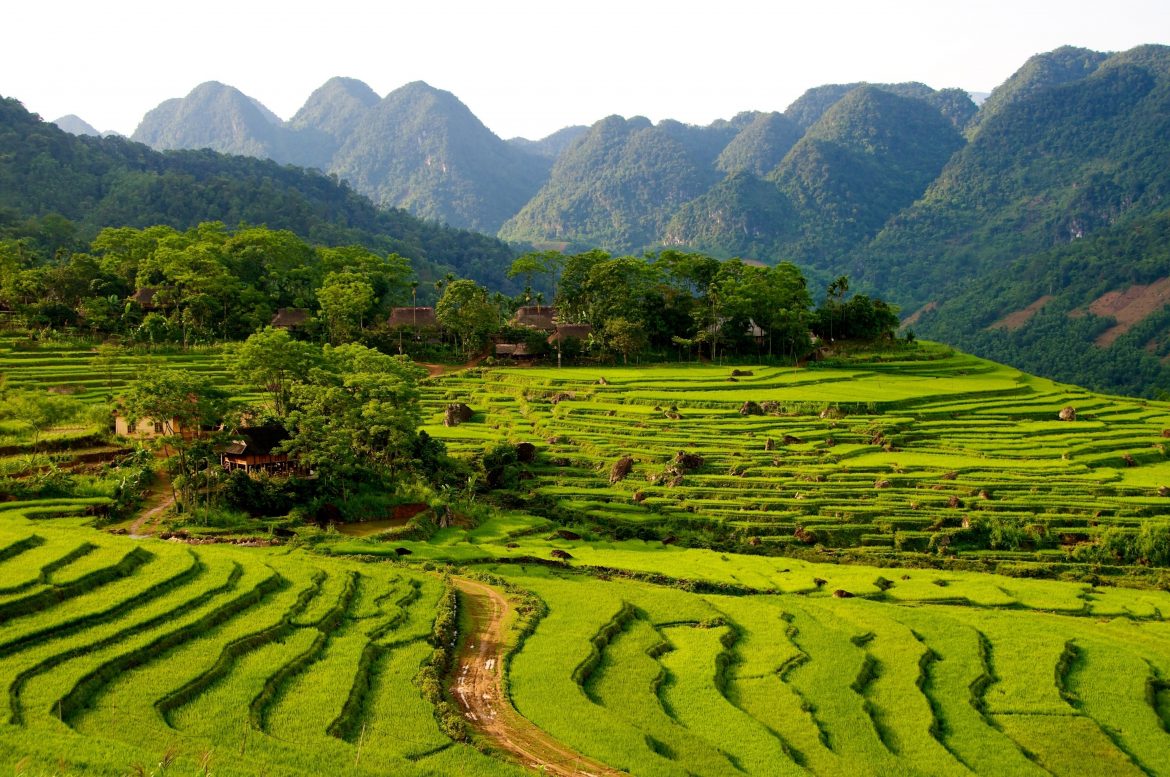
-
Mai Chau
Mai Chau is stunning in each of the four distinct seasons. It’s spring from February to April; the flowers blossom, and it’s warm and pretty nice. Throughout the summer, the scenery in Mai Chau changes. Rice season occurs between May and June, when the valley is covered in ripe rice’s golden hue. The ideal time of year to visit Mai Chau is actually from August to October, when the sun is shining and honey is being poured upon the rice fields.
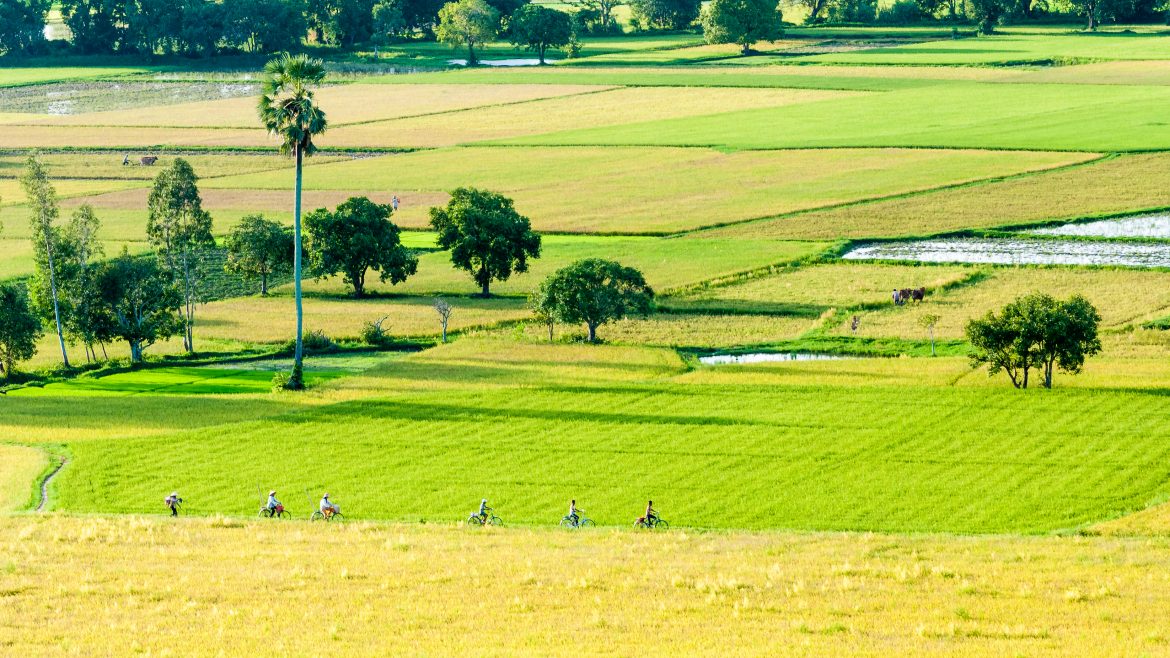
Therefore, September through October is the optimum time to pack your bags and go along this route if you want to get the most out of it.
2. Mai Chau – Pu Luong: All you need to know
a. Mai Chau
What to do in Mai Chau
-
Discover Thai national identity
The White Thai population has traditionally resided in Mai Chau. In contrast to the Black Thai in Dien Bien, the White Thai have their own unique way of life, including clothes, farming, and stilted homes. Visit charming stilted homes, browse for trinkets, and tour traditional tourism towns in Lac, Van, and Pom Coong.
 Due to the abundance of community guesthouses, Lac village is the most popular with tourists. With numerous international visitors, Ban Van is a new village that has been planned as a cultural tourism village. The third village, Pom Coong, is a little farther away but is also highly popular with tourists.
Due to the abundance of community guesthouses, Lac village is the most popular with tourists. With numerous international visitors, Ban Van is a new village that has been planned as a cultural tourism village. The third village, Pom Coong, is a little farther away but is also highly popular with tourists.
-
Trekking in Mai Chau
In Mai Chau, rice fields are dotted with black stone slabs on gently sloping terrain. You may still travel into the deep villages like Step, Kha, Ban Te, and Kha hamlet, despite them not being quite as spectacular as the terraces of Mu Cang Chai or Hoang Su Phi. These hiking paths, however, require the supervision of a local guide and proper preparation for an exciting journey.

Visitors may also be intrigued to explore caverns like Mo Luong Cave and Chieu Cave. You may observe the bizarre beauty of stalactites and take in the panoramic splendor of Mai Chau from above by ascending 1200 steps to the afternoon cave.
-
View Mai Chau’s sunrise
You must get up early, especially at Mai Chau, to witness the dawn behind the tall mountains. Away from the busy metropolis, where you are unlikely to see such a lovely moment to greet the new day, it is a genuinely intriguing and worthy experience for a holiday.
-
Thung Khe Pass
On Highway 6 in the province of Hoa Binh, Thung Khe Pass (also called White Stone Pass) is situated between Mai Chau and Moc Chau. Anyone who has visited Mai Chau is likely to never forget this stunning route. Standing on the summit of Thung Khe pass, more than 1000 meters above sea level, you can zoom in and take in the entire scene of lovely, verdant, and serene Mai Chau right at your feet.
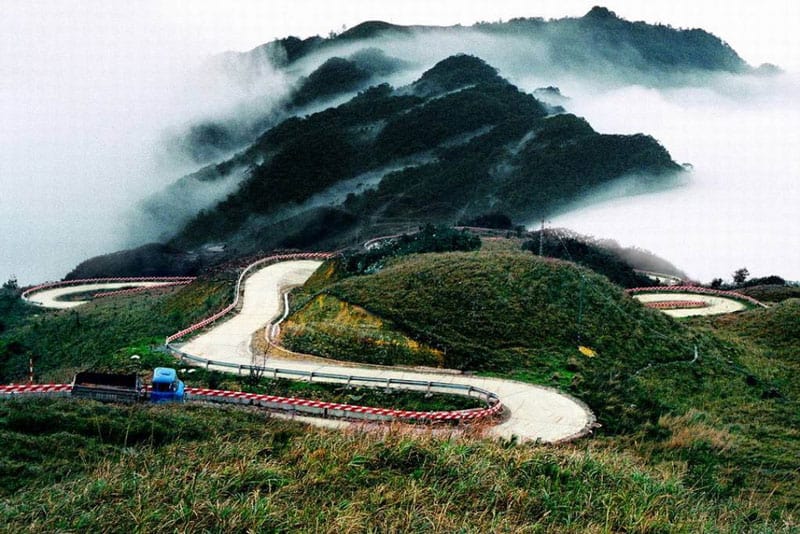
-
Lac Village
Lac village today is a very familiar community tourist destination in the hearts of tourists near and far. Not a bustling, ostentatious, or expensive place, but all of them are rustic, natural, close-knit, and welcoming, making people who come here once will remember it forever. Where the cultural identity of the white Thai people is inscribed in Lac village, Mai Chau. Ha, Lo, Vi, Mac, and Loc are the five ethnically Thai families that reside in Lac village.

Suggestion: Cycling around the village
With the cool and quite fresh air, in the morning, you can completely rent a bicycle to roam around Ban Lac and cross to Pom Coong. Cycling is a beneficial physical activity for the body.

-
Pom Coong Village
Pom Coong, a name with many symbolic and deep meanings, is described as the settlement of the hills lying on a big drum. Pom Coong, which has approximately 70 households and more than 300 residents, has a reputation as a cultural hamlet, a tourist destination, and a desirable location for travelers from all over the world. The Pom Coong people continue to construct distinctive homes on stilts to live in. Only vegetable gardens or thin hedges separate the houses as they get older, allowing residents to interact and play while sitting on the front porch.
Must-try Dishes in Mai Chau
- Com Lam (sticky rice cooked in bamboo)
- Ca suoi nuong (Grilled fish)
- Nhong ong xao mang (Stir-fried bee pupa with sour bamboo shoots)
- Thit uop chua (Sour marinated meat)
Accommodation in Mai Châu
- Mai Chau Sunrise Village
- Mai Chau Ecolodge
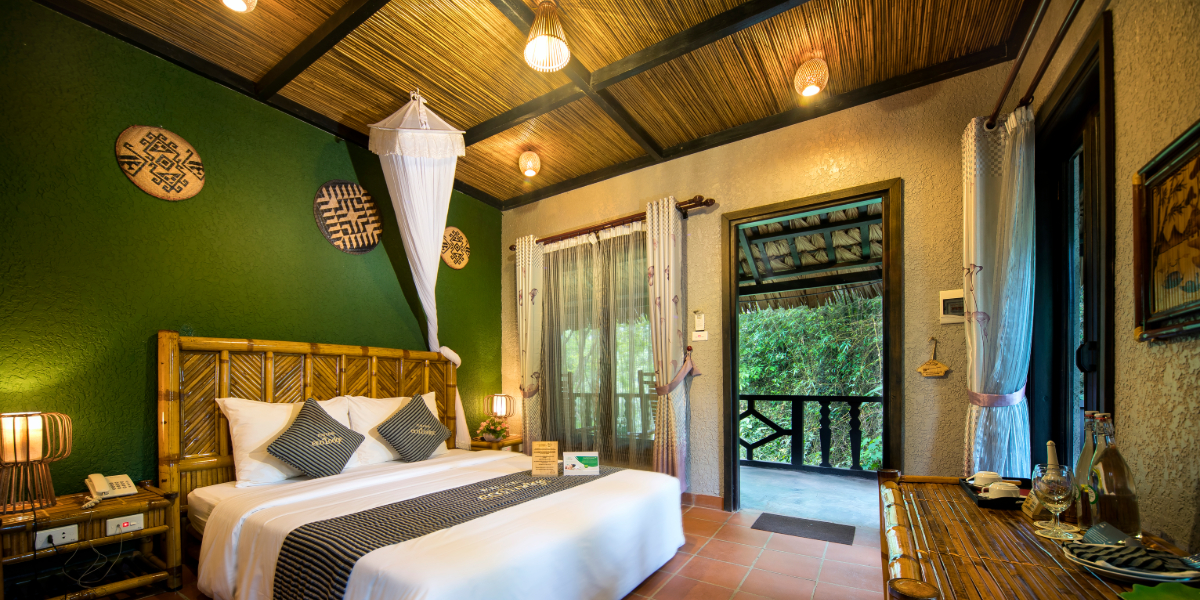
- Mai Chau Sunset Boutique
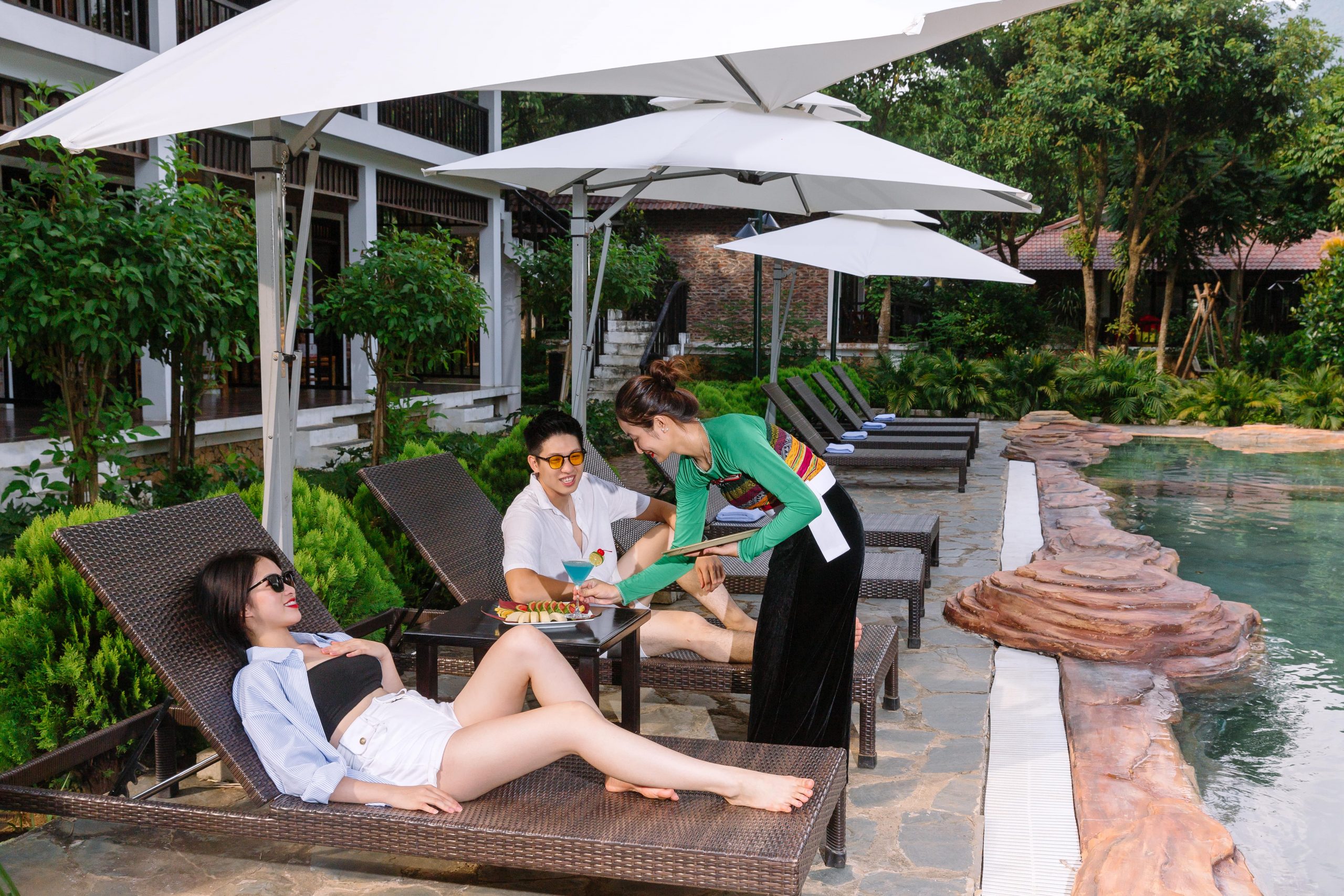
b. Pu Luong
What to do in Pu Luong
-
Conquering Pu Luong Peak

For adventurous travelers, conquering Pu Luong peak is really an experience you should not miss. Standing atop Pu Luong’s summit, which is 1700 meters above sea level, tourists can view the entire huge natural landscape, including clouds and mountains, enormous terraced fields, and serene roofs on stilts. They combine to produce a basic, rural charm. Furthermore, guests can engage in camping activities with friends on the summit of Pu Luong to enjoy the sunset at twilight and the lovely dawn the next morning.
-
Pho Doan Unique Fair
Located in Lung Niem commune, Ba Thuoc district, Thanh Hoa province, Pho Doan Market, also known as Pho Don Market, is a market that dates back to the French colonial era. The market, which draws tourists to Thanh Hoa because it is a distinctive upland market, is located around 150 kilometers northwest of the city center.
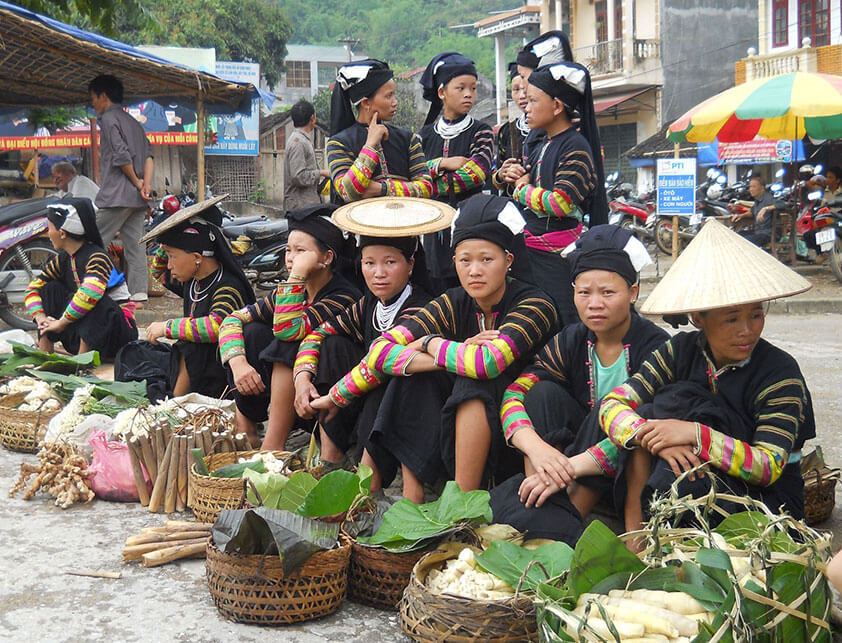
-
Chieng Lau Water Wheels
The majority of Thai Den people reside in Chieng Lau hamlet, which is 5 kilometers from Canh Nang town. These people live along streams and have been growing wet rice for many years. Since it was recently constructed to make it easier for locals to commute, seeing the water wheels should probably be your first stop when you arrive. The water wheel serves as both a representation of Pu Luong and of the Thai people.
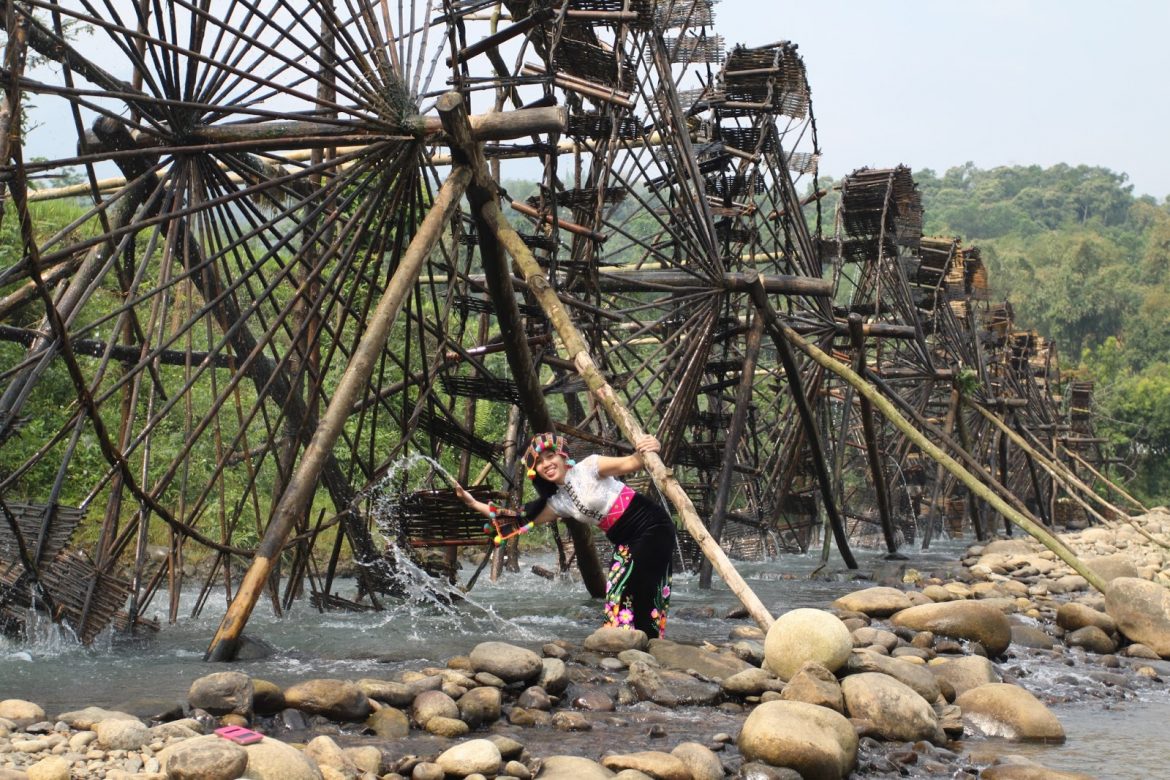
There are numerous Doc fish farms that you will pass before reaching the Water Wheels. It is a species of fish that is raised by the locals and may be found abundantly in the Ca Than stream and along the Ma River. The unique feature is that these fish farms use water wheels to get water from the stream. This is a fantastic invention made by the Thai ethnic group that represents the rise of wet rice agriculture.
-
Admiring the Cham River on a bamboo raft
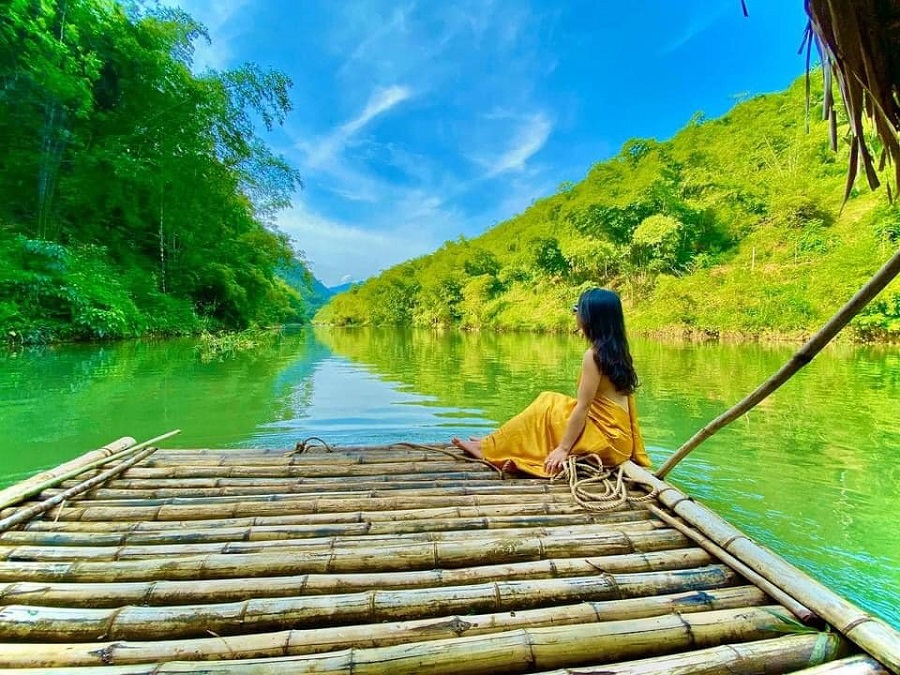
When visiting Pu Luong, one of the locations you should go is to watch the Cham River. Sitting on handcrafted bamboo rafts and admiring the lush bamboo woods and beautiful mountain views is an interesting experience. Thai people currently travel and fish in rivers using bamboo rafts. Going to Bamboo Raft has taught me that you should make reservations in advance because there are only so many spots available.
-
Hieu Waterfall
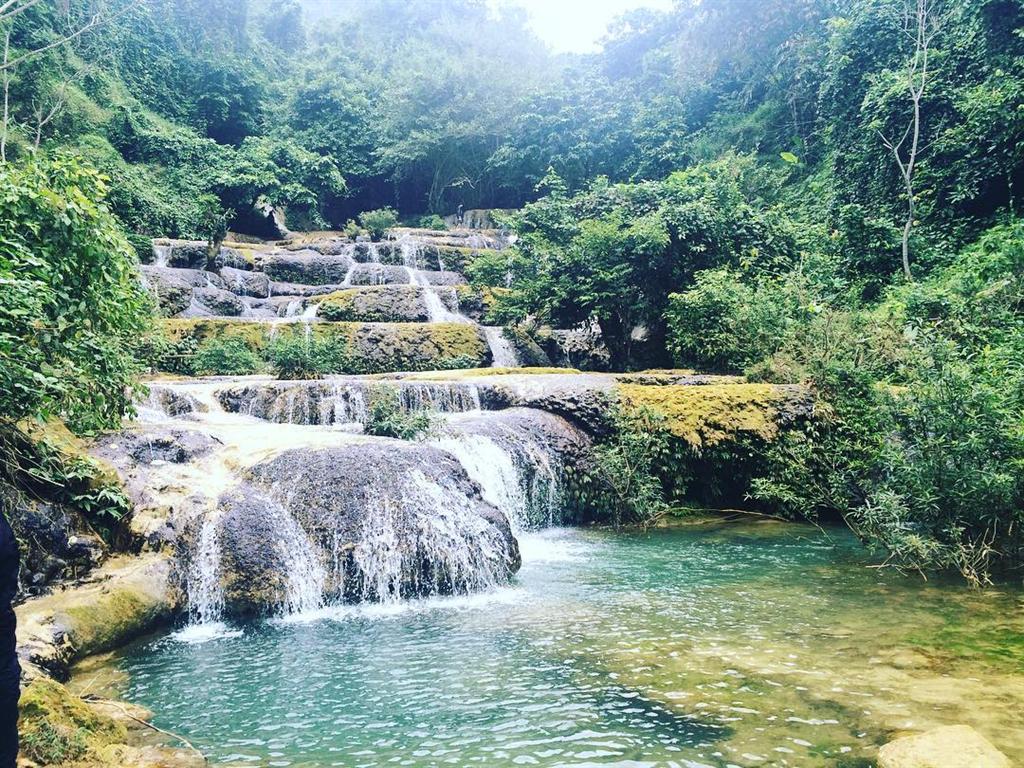
The Hieu waterfall is situated within the Pu Luong Nature Reserve’s central section, on the grounds of Hieu village in the Co Lung commune of Ba Thuoc, Thanh Hoa. About 800 meters long, the Thac Hieu stream divides into two branches that flow in opposite directions before merging at its terminus. Thac Hieu originated in the limestone environment of Pu Luong and Cuc Phuong, a model of the Karst ecosystem that is significant on a global scale.
Thac Hieu stream is said to never run dry and to always be a clear blue tint. Along with a network of restaurants and homestays, Hieu Waterfall has also become a well-known tourist attraction in Pu Luong, however the number of visitors to Pu Luong is declining
-
Bat Cave/Kho Muong Cave
Bat Cave, also known as Kho Muong Cave, is one of the famous caves located in Pu Luong Nature Reserve. In the Bat Cave are countless majestic limestone blocks formed 250 million years ago. In the cave are stalactites with countless strange shapes, plants and beasts. Bat Cave is also home to many types of bats, including at least 4 species of bats residing here.
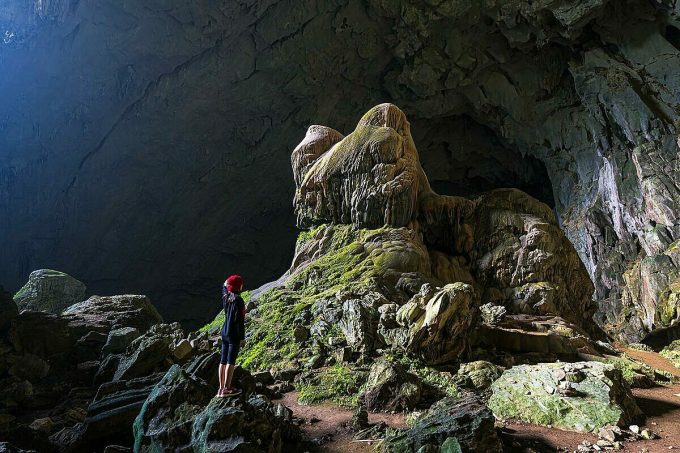
Must-try Dishes in Pu Luong
- Vit Co Lung nuong (Co Lung Roast Duck)
- Canh dang (Bitter Soup)
- Nom hoa du du tron ca rung (Papaya flower salad mixed with wild eggplant)
- Lon co nuong (Roast Pork)
Accommodation in Pu Luong
- Pu Luong Boutique Garden

- Pu Luong Eco Garden
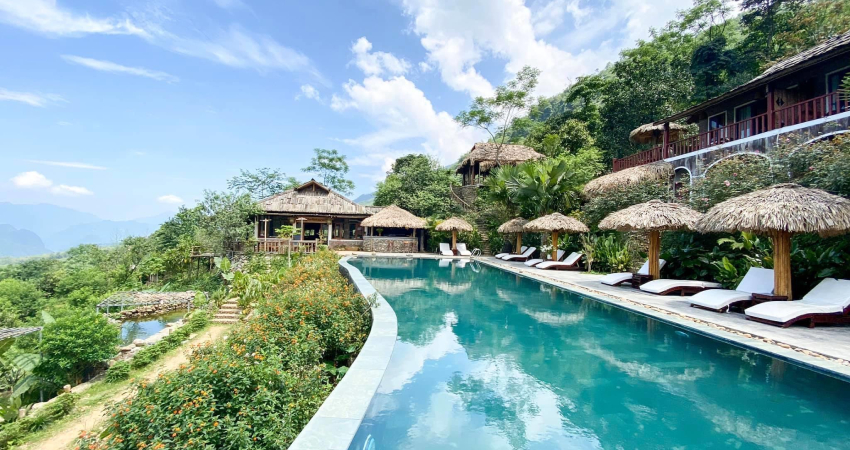
Pù Luông Eco Garden Thanh Hóa
- Puluong Retreat
3. Introduction of Lux Travel DMC
Ready to dive into the gorgeousness of Vietnam? Book a tour with Lux Travel DMC to get the best out of your trip. We offer custom-made tour itineraries tailored to your demands, along with premium services that cater to your every need and unique cultural insights and experiences from our seasoned guides.
Contact us at:
- Address: No.456 Lac Long Quan Street, Tay Ho District, Hanoi, Vietnam
- Phone: (+84) 4 3927 4120
- Email: sales@luxtraveldmc.com
- Hotline: +84-336-276-996
- Website: https://luxtraveldmc.com
